Consider a damper to be a barrier. Whenever a damper is shut, it prevents air from passing through it in the same way as a dam prevents water from flowing down.
A damper, also referred to as an air duct damper, is a device that regulates the ventilation within your house. It's a moveable board around 4 to 6 feet away from the central duct branch.
The dampers regulate air circulation and hence the thermal environment. Dampers are often installed where the overhead power line meets the circular supply ductwork.
Dampers are an essential part of any regulating scheme. They work as ductwork regulators, determining which areas of your house demand how much hot air to accomplish your desired temperatures.
Simply said, it allows you to regulate the volume of the ventilation system that is delivered through your house.
Ducts have been used to regulate ventilation but are not as effective as dampers. They should not be mistaken with the vents put in the walls and ceilings.
Dampers are situated just next to the transmission pipe's entrance and can prevent airflow from the ducting. The airflow is banned from entering the room by venting but remains in the duct lengths.
Dampers exist in a variety of designs, lengths, and functionalities. They also vary in terms of how they can be operated — in other words, whether they are manual or automatic.
The vents positioned outside the ducts must be used to operate the manual damper. They don't require as much servicing as automated dampers, but they aren't exact. To open or shut a specific damper, you must physically push it upwards or downwards.
A controller opens the vents and plates of automated dampers and closes them. They are helpful because they can be operated from a distance. They also have the function to regulate automatically as the weather changes.
Let's take a glance at some of the varieties of dampers in the air ducts available:
Backflow valve dampers and funnel dampers are different ways to define bypass dampers.
Increased emissions from rotors are typically sent to thermal performance using this sort of dampers. These dampers are usually seen as a double damper design in a pipe layout.
Face and bypass dampers are commonly used in thermoelectric boilers in power generation. These may also reduce emission and fossil fuel power exhaust systems and thermal energy storage.

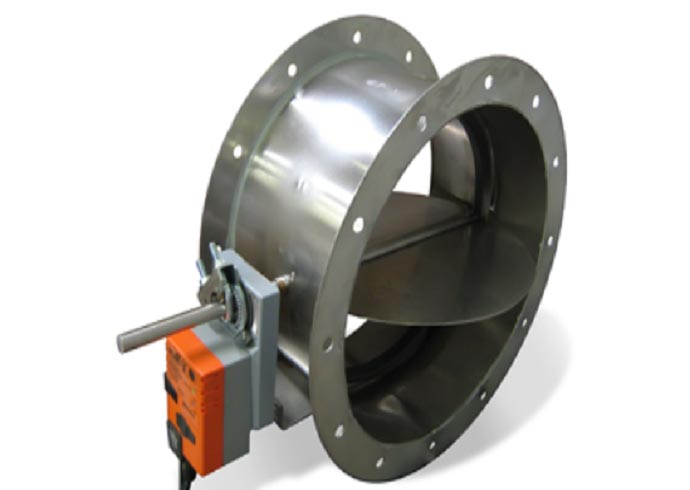
The circular blades on a core pivot and a sealant make up butterfly flat dish dampers. Once correctly aligned with both the ducts, the edges regulate the ventilation.
The adhesive links the blades' surfaces to the duct's perimeter, preventing particles from accessing the system.
Because they can prevent rapid depressurization by confining ventilation in a straight path, these sorts of duct dampers are indeed a good choice for fire safety.
They work well with circular ducts.
The Pressure Relief Damper and the Pressure Relief Damper are two different types of pressure-reducing dampers. They are utilized in various industrial applications, including lightweight, midrange, and substantial industrial and ventilation systems.
Backdraft dampers enable automated ventilation in just one direction and limit backflow. Backdraft dampers are typically seen on blades to restrict the rotor from spinning backward due to pressure gradient.
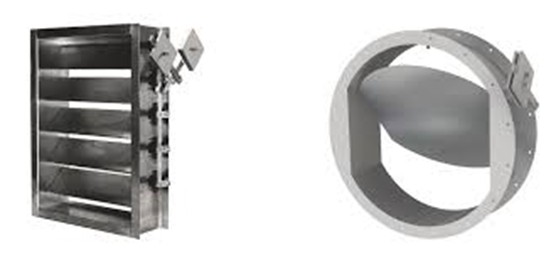
These features are also available with pressure relief dampers, although at a higher and variable start to open pressure in most instances. Usually, these dampers are utilized to keep the system from over-pressurizing.
Car factories, electricity grinders, and distilleries require significant emissions; hence backdraft and pressure relief dampers can be employed.
Steel plates are the most fundamental element of blade dampers. They control the airflow in ducts and even fireplaces.
There are two kinds of blade dampers: Paralleled blade dampers and opposing blade dampers.
Blades in parallel blade dampers behave in the same way. Opposite blade dampers, on the other hand, move in the opposite direction.
When compared to one another, both of these kinds perform exceptionally differently.
The greatest solution for maintaining airflow is paralleled blade dampers. Opposite blade dampers, but on the contrary, are superior at guiding ventilation.
They have a better insulating ability than all the other dampers and emit minimal sounds.

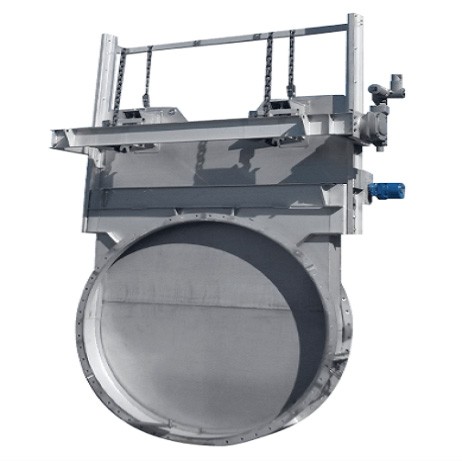
A guillotine damper can be used anywhere good isolating is demanded. This is owing to their superior capacity to encapsulate.
They may be utilized to intermittently control ventilation in zone ductwork while your Air conditioner is being serviced.
The most common type of duct damper in the air duct systems is the louver damper.
It provides excellent airflow blocking characteristics and is made of thin blades on joints.
The reasoning for this is that their reliability allows them to suit any duct type.
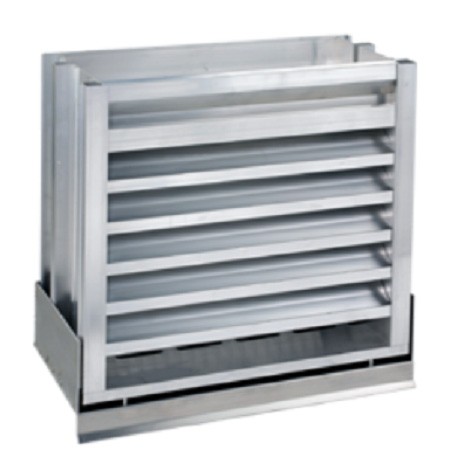
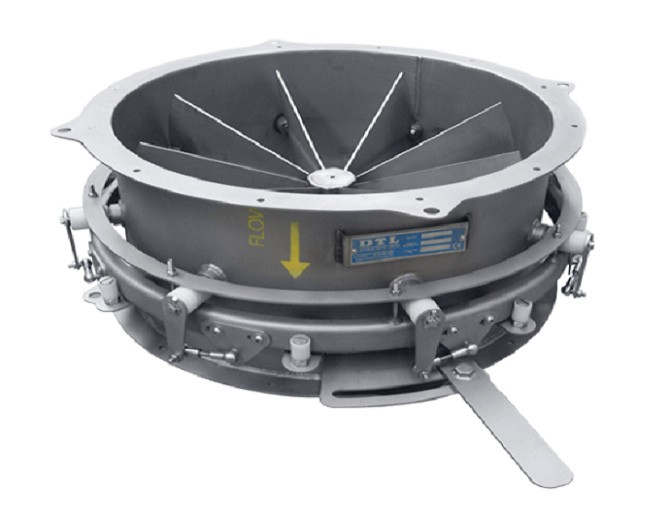
Adjustable inlet vanes or internal vane dampers are other names for inlet vane dampers.
Inlet vane dampers are utilized in devices that need both fans closed and noise adjustment for controlled ventilation.
To lessen the strain on the blade, incoming air is driven beforehand in the way it rotates, cutting velocity and circulation and minimizing power usage.
Inlet vane dampers can therefore save money on fuel in the foreseeable future.
There are many kinds of dampers available in the market, and the most used ones are already described above. Now, what are your requirements and budget that will decide for you to buy dampers? Everyone would want to buy the most popular, durable or long-lasting, easy-to-use, and cost-efficient mufflers for their need. So the criteria of choosing are primarily based on.
Installing dampers in the house is only one side of the equation; another is successfully regulating them. We should keep our dampers inside or outside depending on the season, especially air - conditioning requirements. Let's take a look at how to accomplish this.
But first, keep in mind that it is only a tutorial for mechanical dampers. You won't conduct these procedures if you already have an automatic regulating setup since your Ventilation or air duct system will handle it automatically.
First and foremost, locate the duct damper. However, this can be challenging. A damper entrance in old houses may be obscured by sidewalls or plaster, making it very difficult to locate.
If the ducts are obstructed by plasterboard, you have no choice except to knock down the structure to use them for regulating your ventilation system.
However, an entrance valve is usually in clear view, properly marked to determine which area the dampers are for.
Just turn a valve, much like a faucet, to change a damper. You may also change the damper just to be partially closed.

Be aware, and ensure you're getting the correct damper from another location. Locking all the dampers individually then reopening and marking each will take a long time.
Now let us look at an example of how altering the dampers might improve your convenience. Because cold air descends and heated air flows, the bottom floor of a guesthouse will be colder.
During the summertime, shut the dampers on the lower tiers and only allow air to travel through the top portion.
The chilly airflow will continue moving downhill at this point. On the other hand, summertime is ideal since you can shut the top dampers, and hot air will ascend from the base up.
Dampers serve an essential part in regulating your apartment's thermal gradient. If you have a large extended family and several spaces in your house, they could be pretty advantageous.
You may alter the thermostat of any room with your Ventilation system solely on a single temperature setting by using dampers. A damper, for example, may be used to modify the temperatures of each room without impacting the temperature of the house.
Another advantage they provide is a decrease in power use. Your Air conditioning will need less power to function if you regulate or control ventilation. As a consequence, you'll be able to save money on your heating and cooling bills in the long term.
Hopefully, after going through this article, you've gained a broader idea of the value of dampers and can make a more informed decision when upgrading your air duct system.